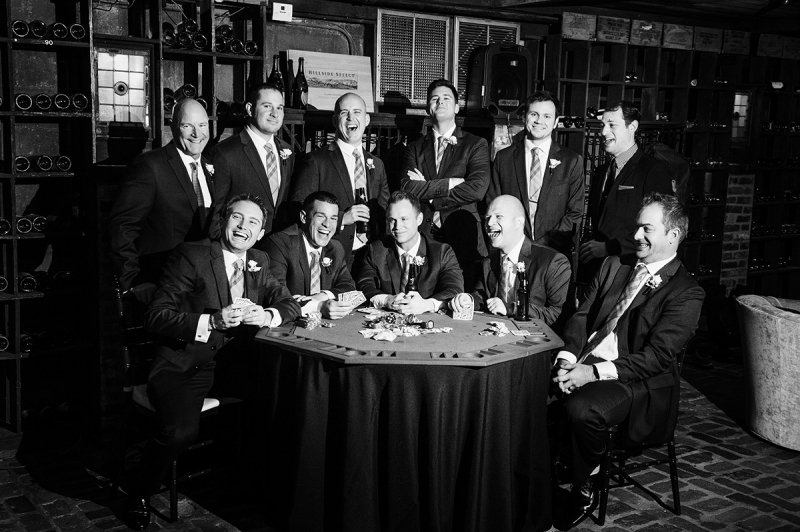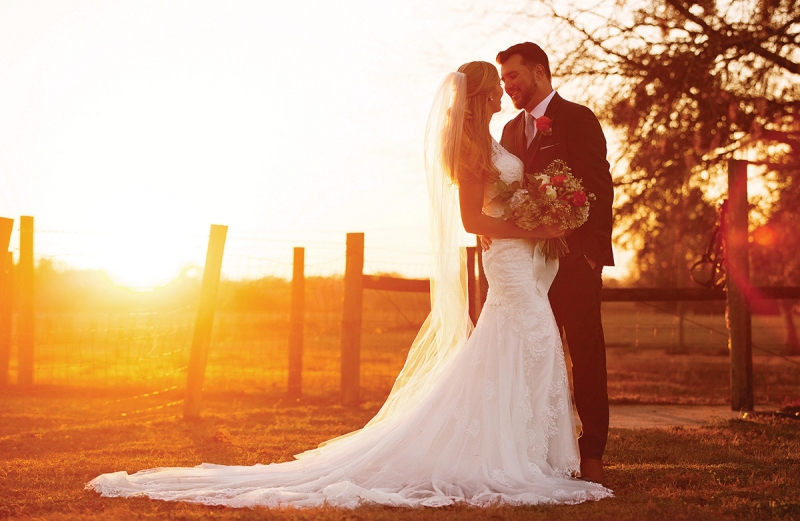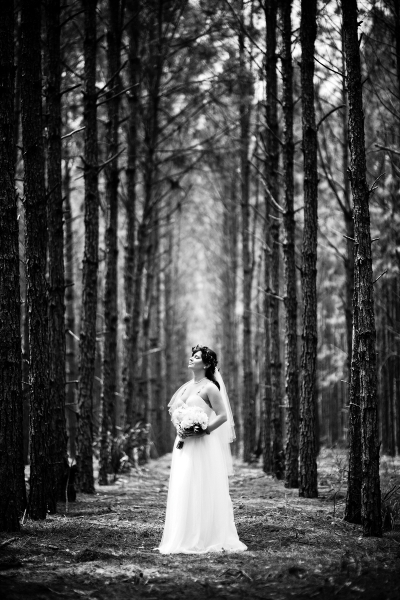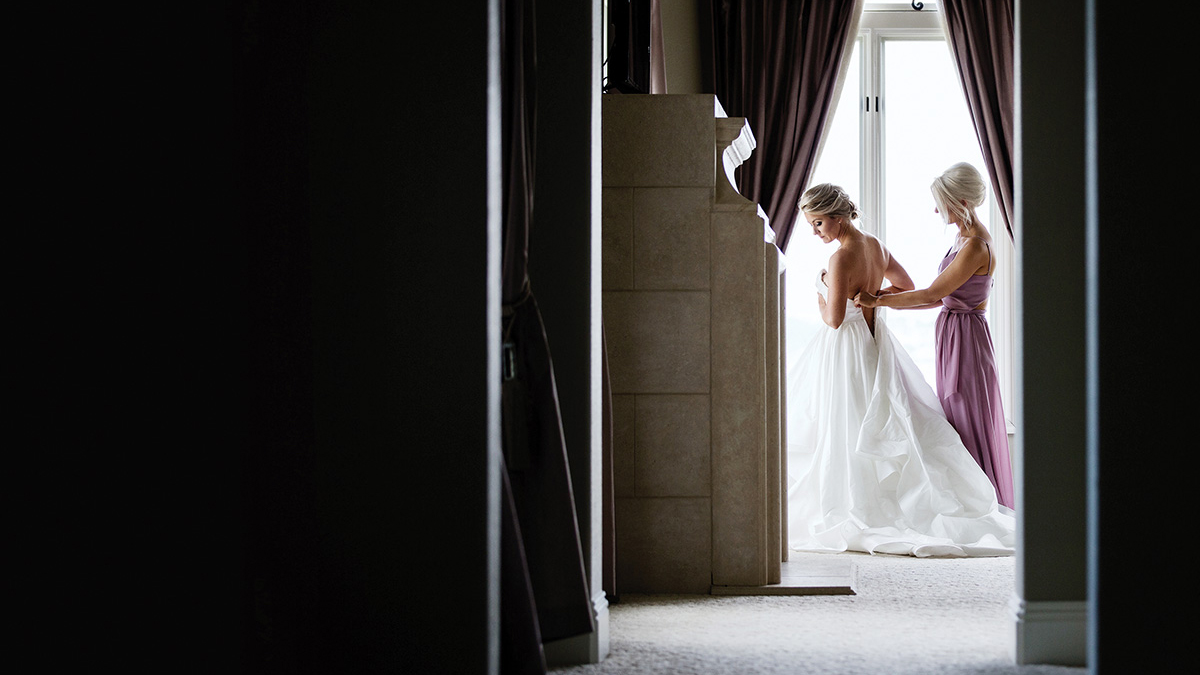A Wedding Sales Process that Prepares Clients to Buy
Kristin Privette of Footstone Photography says offers wedding photography sales depends on a step-by-step process that allows you to discover clients' needs.
• November 2020 issue
The wedding industry has seen tremendous upheaval in recent months. Events are evolving. Client preferences are changing. But good news: the fundamentals of booking, photographing, and selling weddings still apply.
Even in these unusual times, Kristin and Paul Privette’s studio, Footstone Photography in Gainesville, Florida, has landed wedding sales to clients from $2,000 to $50,000. The higher end of that range emerges as the result of a structured sales process built on client education, service, and careful preparation. The strategy is to guide clients through the experience so when the time comes to make monetary decisions, they’re excited to do so.
“The best part, and what I really want to help other photographers see, is that selling can be an honest process where you are serving more than selling,” says Kristin Privette.

INTRODUCTORY CONSULT
The first step in the process is a good old-fashioned phone call. During this introductory conversation Privette focuses everything on the client, not on selling herself or the studio. Her goal is to help the prospect answer two questions:
- Do I connect with this photographer?
- Can I afford the lowest-price package?
Privette keeps it simple. She doesn’t go over collections or options, as those details can be overwhelming. Instead, she listens, talks about the prospect’s likes and dislikes, asks them about their stories, and looks for red flags. If there aren’t any, and if she can establish that the client is comfortable with her starting price, then she moves forward to the next step.

IN-PERSON MEETING
Privette uses information from the phone consultation to make strategic decisions about sample selection. “I don’t overwhelm them,” she says. “The more samples and options I pull out and try to show them, the more it turns the conversation to be about me, not them. And they don’t want to talk about me.”
The meeting helps establish a relationship. Privette digs into what’s important to the clients, what’s not, and what they want their day to look like. That conversation opens an opportunity for Privette to insert herself into the picture, which she does by pulling out sample albums (never more than three) that are the closest matches for the couple’s vision of the day.
After looking at the books, clients usually have questions about how much things cost and different package options. Then it’s appropriate to present the studio’s collections.
When presenting collections or packages, think in terms of helping people find what they want rather than trying to sell them on any particular option. To keep things simple and avoid the profit-busting temptation to overload collections with too many items, Privette includes just four line items in each collection:
- Time
- Cost for X number of photographers to capture the event
- Amount of print credit included
- Amount of album credit included
“That’s all they really need to know at this stage,” says Privette. “I don’t have to get into album types, canvas sizes, print options. It’s too confusing for the clients. We’re still operating with the two fundamental questions from the initial phone call: Do we connect? And can I afford the lowest-price option?”
During this meeting, Privette doesn’t ask clients to commit to a specific collection. They just need to pay a retainer to reserve the day. They can make their final decision and payment on the collection up until 30 days before the wedding.

REVEAL MEETINGS
After the wedding, there are two key sales meetings: the wedding reveal and the album reveal. During the wedding reveal, Privette shows images from the wedding and helps clients decide on the specs for their album. This is when they discuss more specifics about pages, options, and pricing.
When the first draft of the album is ready, she hosts them again for the album reveal. At this session, Privette shows a fully designed book draft with the maximum number of pages. The client can choose the full book as designed or streamline spreads according to their budget. Then they place their final order.

GAME CHANGERS
In Privette’s sales model there are two pieces of the puzzle that can potentially double the sale if they’re inserted correctly: the engagement session and the album.
Engagement session. Assigning a high value to the engagement session signals its importance to the couple. For every engagement session, Privette does a projection sales session in the studio, where she offers the opportunity to choose prints and order a guest book. Working this way, she’s able to add $2,000 to $3,000 per wedding on engagement photos alone.
Album. It’s not unusual for album sales at Footstone Photography to be larger than the original collection the bride and groom purchased. To move toward this type of sales success, Privette prepares clients for this possibility over and over and over again.
“Our albums start at 30 pages, but the books I show during our initial meetings are all more than 100 pages,” she says. “I explain this to the couples and tell them that some couples don’t order additional pages, but some couples will spend more on the album than they spent on their original package. They may think that sounds crazy, but they heard me say it, and they recognize it’s a possibility.”
A useful trigger happens when clients ask how many pictures they need to choose for their album. That’s the opportunity for Privette to educate them on what their book should look like. She tells them there’s no magic number—some spreads have a single image and others have a dozen—but you can estimate three to five photographs per spread.

“They’re happy because I answered their question, and they can start doing the math,” says Privette. “At the same time, I get the opportunity to tell them that we are going to put every moment from their wedding in the first draft of the book. And then I repeat: ‘Now, some couples don’t choose any extra pages. Some couples spend more than their original package on their book.’”
This is a crazy concept for some photographers because Privette essentially designs the full version of the album not knowing if the clients will buy any extra pages. “But as an artist, I can’t wrap my head around not showing them my best work,” she says. “This should be your best work, not a scrapbook that you put together because you assume someone doesn’t want to spend money. The value that I’m selling is the value of a moment, not an image. And when they see it, they understand it because I’ve given it the value it deserves.”
The result: Nine out of 10 couples upgrade their album from the basic 30 pages. About 60% walk away with a book that’s 60 to 70 pages (roughly double the basic 30), and it’s not unusual to see album orders exceeding 100 pages.
VIRTUAL OPTION
The fundamentals of the process shouldn’t change even if you’re not able to meet face to face, says Privette. Even in non-pandemic times, there are plenty of instances when you can’t sit down in the same room with a couple, so the process goes virtual. Zoom meetings and screen shares can be a photographer’s best friend. The key is to work through the steps and maintain client education at every stage. Don’t be tempted to let things slide or resort to quick and easy communications via email because that’s simply not going to yield results at the higher ends of the market.
Also bear in mind that just because some photo studios have suffered this year, that doesn’t mean everybody is suffering, says Privette. “Maybe the events are smaller, maybe the interactions are different, but all that money that could’ve gone to food, beverages, and big venues, can now go to photography. This is still a major event in people’s lives, and your clients deserve the best you have to offer. So don’t sell them, or yourself, short.”
Jeff Kent is editor-at-large of Professional Photographer.



